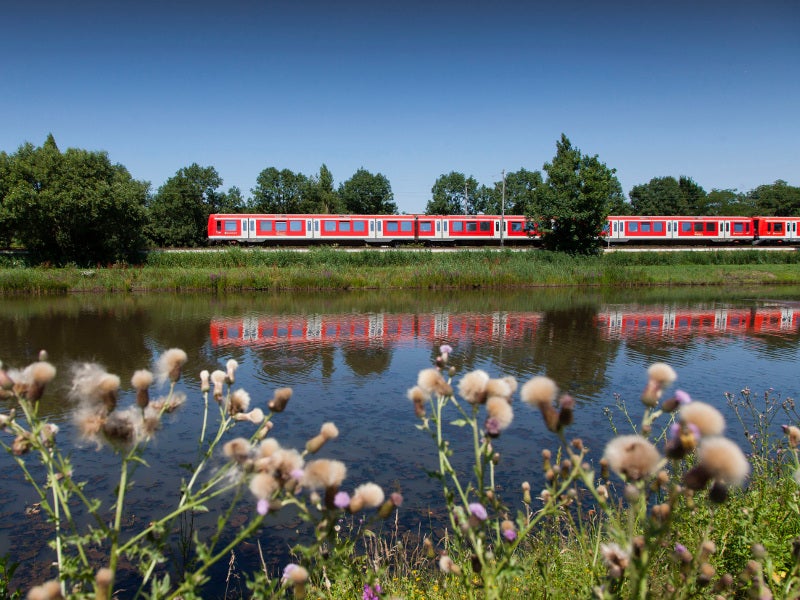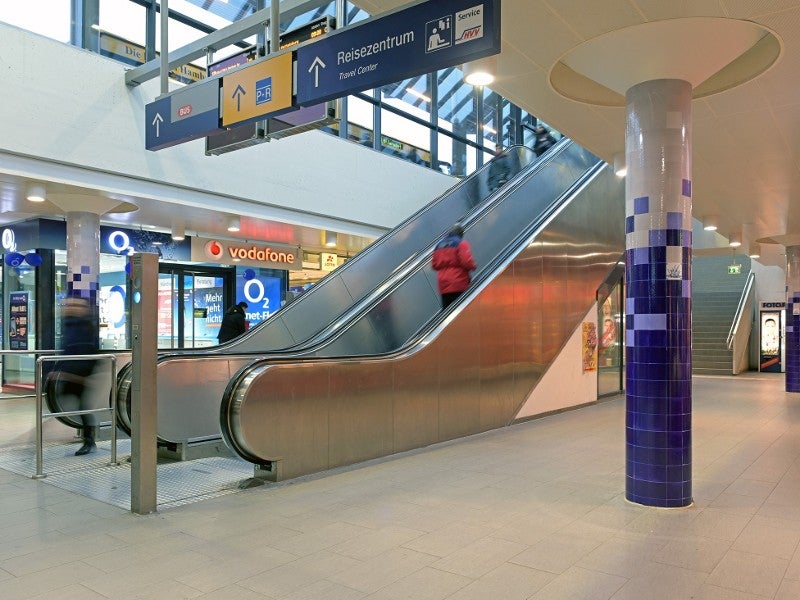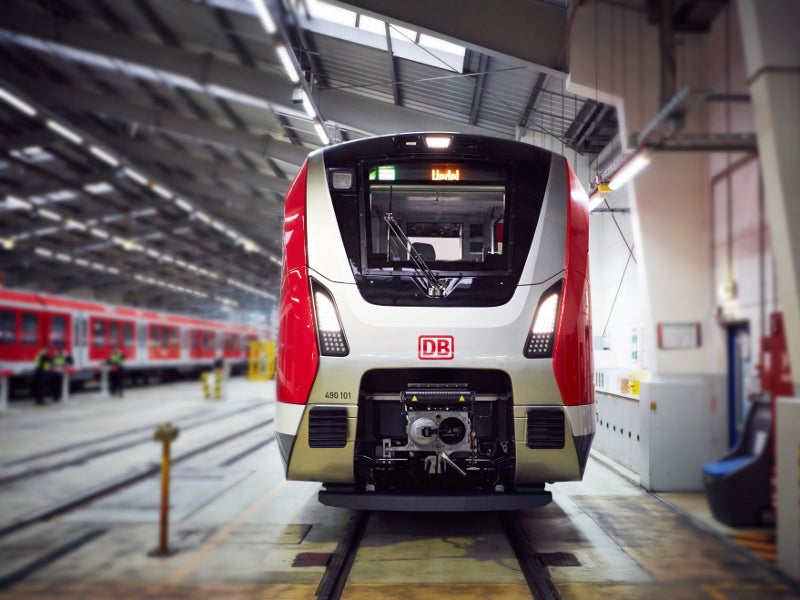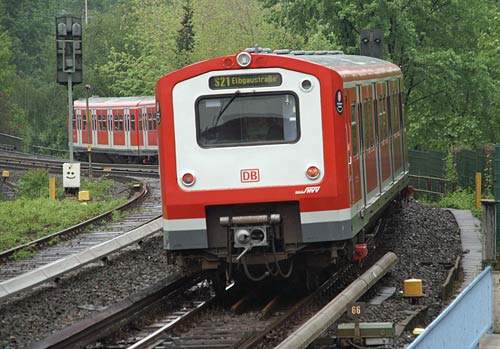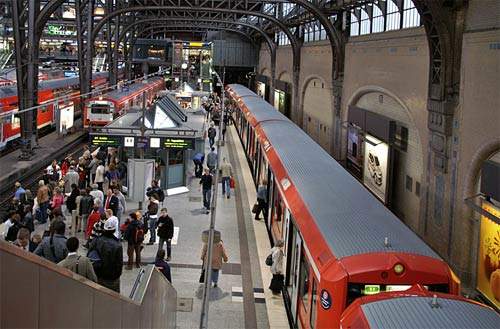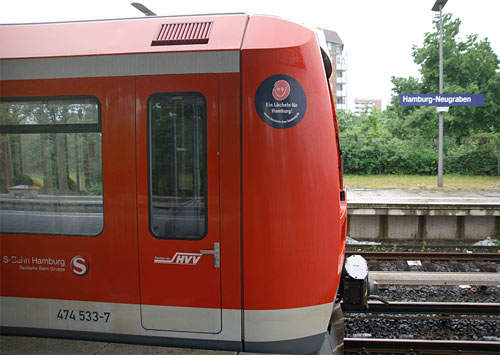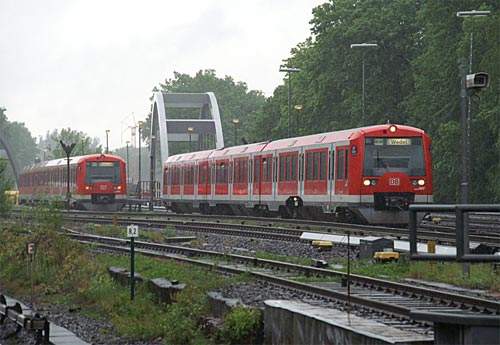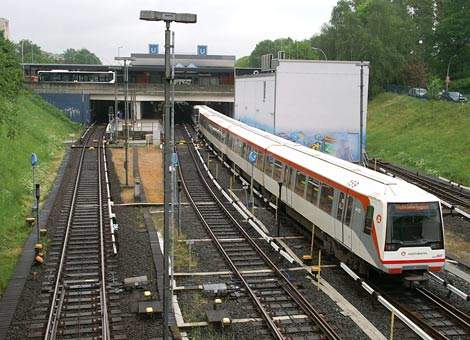Hamburg S-Bahn is a rapid railway network project in the Hamburg metropolitan region in Germany. The line mainly connects the region to the Hamburg Transport Association (HVV) network, main railway station and Hamburg Airport.
Operated by S-Bahn Hamburg, the project has the capacity to accommodate up to 280 million passengers every year.
The Hamburg S-Bahn railway network covers 147km throughout the city and its surrounding regions. It has six lines and 68 stations in the area. The network transports 200 million passengers a year. It reported a ridership of 227 million passengers in 2016. The network is being operated by S-Bahn Hamburg (DB Regio).
Hamburg S-Bahn development
The three-line 101km (62-mile) U-Bahn, operated by Hochbahn, runs around the centre on mainly elevated or underground alignments, extending at ground level into the suburbs.
Hamburg S-Bahn is an electrified urban railway that started operating in 1907 and then underwent several technical changes and an extension of the route length. The Hamburg S-Bahn was expanded in stages with notable extensions, including Pinneburg (1969), Altona (1979) and across the Elbe to Harburg Rathaus (1983) and Hamburg-Neugraben (1984).
The tariff union, Hamburger Verkehrsverbund (HVV), runs the common ticketing system for the various public transport modes.
Renovation work on the retaining walls of the S-Bahn tracks in Hamburg-Sternschanze started in February 2009 and was completed in October.
Hamburg S-Bahn railway network lines and routes
The S-Bahn system operates over six lines, which include four main lines S1, S21, S3 and S31, with other two being S11 and S2. Lines S1, S2 and S3 pass through the inner-city tunnel via Jungfernstieg. Lines S11, S21 and S31 pass through Verbindungsbahn via Dammtor.
S1 connects Hamburg Airport to Wedel. The airport was brought onto the rail network with a ten-minute interval service.
From a new junction north of Ohlsdorf station on route S1, a 3.1km (1.9-mile) two-bore tunnel leads to an underground station serving the airport’s terminals. The S-Bahn station at Ohlsdorf was renovated and developed in 2008.
S2 connects Altone and Bergedorf stations, while S3 features Pinneberg and Stade as its terminals. S11 connects the stations between Blankenese and Ohlsdorf, S21 has the Elbgaustraße and Aumühle stations as terminals, while S31 links Altona, Harburg Rathausa and Berliner Tor.
Infrastructure along the Hamburg S-Bahn railway network
Unlike most German S-Bahn systems, but in common with Berlin, Hamburg’s system is mostly independent of the main DB tracks with the exception of the Stade extension, although many alignments are shared. Also similarly to Berlin, power supply is by a third rail outside of the running rails, although unlike Berlin’s 750V, the Hamburg standard is 1,200VDC.
Excluding the airport project, there are approximately 13km of tunnel, mainly the tracks under the city centre and the S3 section under Harburg on the left bank of the Elbe.
Due to alignment and confusing identification, at the busy Landungsbrücken station that serves Elbe ferries and tour boats, S-Bahn tracks are underground, with the U-Bahn high on a prominent viaduct.
With little space available due to intensive long-distance and regional services in a restricted location, Hamburg Hauptbahnhof has the two city outbound S-Bahn tracks inside the train shed, while the inbound tracks are in a tunnel just to the east. Maintenance facilities are at the Ohlsdorf depot.
Of the entire S-Bahn network, 113.2km of the network is separated from other rail services while 32km is operated along with regional and cargo traffic.
A new green-plant was built in Kronsaalsweg for the maintenance of the Hamburg S-Bahn trains and it became operational in January 2019.
Rolling stock
The S-Bahn railway network includes 112 electrical multiple units (EMU) of 474 class and 52 EMU of 472 class.
The fleet also includes 42 Zweistromfahrzeuge trains and one Museum train of Class 471. The 474 class trains operate on the lines S1, S11, S3 and S31, while the 472 class serves the S2 and S21 lines.
The later 474.3 series was produced by Alstom and Bombardier. This series was delivered with overhead current collection equipment, with 33 earlier 474 vehicles retrofitted for dual-system operation. Dating from 1974, the Class 472 fleet is subject to a modernisation programme.
The network added new ET 490 series that were launched in December 2018. The trains are equipped with modern passenger information system and air conditioning.
Hamburg S-Bahn signalling and communications
S-Bahn units carry external route and station indicators, with on-board displays and stations announced in German and English. Station platforms have real-time indicators of incoming services.
The system uses several signalling centres that are likely to be phased out with more centralisation. A new signalling centre is due to open in 2008 at Ohlsdorf. The central control at Altona dates from 2001, from where information on train identification, locations and delays can be fed to station displays for passengers.
A modern passenger information system was installed in all the locomotives in 2009. It provides passengers with details of the next stop, transfers, or interchanges with advertisements and bilingual announcements.
The fleet is equipped with a passenger compartment video monitoring system for the security of passengers and a voice communication system to provide a direct voice link to the driver.
Hamburg S-Bahn rail network expansion
Modernisation work on the S-Bahn station Othmarschen started in June 2009. In addition, Inno Trans developed a prototype of the ET 474 Plus in 2011. The prototype was unveiled in July 2011.
The power supply agreement with S-Bahn network for CO₂ free electricity has been extended from January 2010 until 2016. Route S3 was extended by 7km north-west to Stade in Niedersachsen.
Rather than continuing the Hamburg S-Bahn practice of dedicated tracks that would need time-consuming and costly construction, or adding a third rail to existing tracks on this lengthy stretch, pantograph-fitted Class 474 units use existing tracks with a 15kV overhead power supply. The power switchover is in a 135m dead section outside of the Hamburg-Neugraben station.
Hamburg S-Bahn will build a S4 line (east) that will connect to Bad Oldesloe. It is expected that construction will commence in early 2020, with completion scheduled for 2027.
Deutsche Bahn and Siemens signed an agreement to automate driving on a 23km-strech of S-Bahn S21 line and equip four vehicles with the necessary technology.
The ten S-Bahn tunnel stations in the Hamburg route will be modernised and redesigned as a part of the Zukunft Bahn project.
The 474 series fleet will undergo major modernisation and all the trains will be redesigned with more space for bicycles and strollers by 2021.
A new S-Bahn station will be built at Elbbrücken by the end of 2019. Another new station will be built at Ottensen, which will become operational by the end of 2020.

